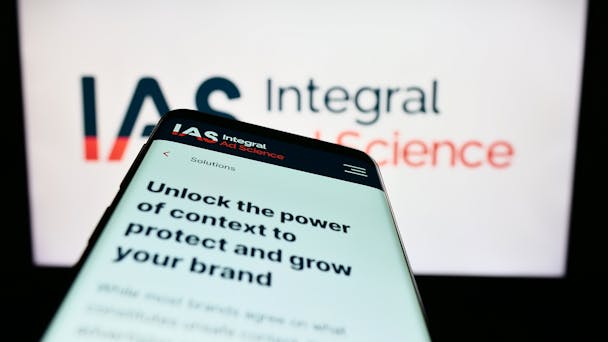Adtech firm IAS harnesses AI to help advertisers avoid spammy ‘made for advertising’ sites
More than 20% of all programmatic ad impressions stem from ’made for advertising’ sites, according to a study published last year by the ANA.

IAS launched a beta version of its MFA-detection technology in October. / Adobe Stock
Media measurement company Integral Ad Science (IAS) has released a new feature designed to protect advertisers from clickbaity ’made for advertising’ (MFA) and ’ad clutter’ sites.
Advertisement
The technology leverages machine learning to enable IAS’ ad optimization platform to identify and avoid harmful sites without compromising an ad’s efficacy across a range of other legitimate channels.
“With the proliferation of MFA, global advertisers need safeguards to avoid ad arbitrage and low performing, high ad density sites while optimizing for media quality and performance,” IAS chief executive officer Lisa Utzschneider said in a statement.
The rise of MFA sites can be traced back in large measure to a growing incentive among programmatic advertisers to prioritize impressions over more tangible, long-term business outcomes.
Such sites, which are populated with low-quality clickbait content, are designed simply to maximize the number of ads that an individual user sees, not the effectiveness of those ads themselves – or, by extension, the reputational currency of the brands they promote.
Advertisement
“Made for advertising sites tend to have excessive ad placements and a high density of ads on their pages,” the Interactive Advertising Bureau (IAB) UK recently wrote in an online document aimed at helping advertisers identify and avoid these sites. “Ads may overshadow or disrupt the user experience, evidence that the primary focus of the site is generating ad revenue rather than providing valuable content.”
A study published last June by the Association of National Advertisers (ANA) found that MFA websites constituted a shocking 21% – roughly one in five – of impressions across programmatic advertising.
The uptick in MFA sites across the web has been fueled in part by the rise of generative AI tools like ChatGPT. This fusion of automated content generation with a programmatic advertising industry which in large part prioritizes ad impressions over efficacy has sparked concerns that the web could soon be inundated with a deluge of shady and shoddy MFA sites generated entirely by machines.
A group of advertising trade organizations, including the ANA, the American Association of Advertising Agencies (4A’s), the World Federation of Advertisers (WFA) and the Incorporated Society of British Advertisers (Isba) established new guidelines for defining MFA sites last September.
Suggested newsletters for you
In contrast to MFA sites – which, as their name suggests, include little else besides ads –the IAS defines “ad clutter” sites as those that “feature high ad density and high ad-to-content ratio, leading to lower performance.”
The IAS’s new tool is made to help ensure that ad spend isn’t going to MFA or ad clutter sites for media buyers who wish to avoid such inventory.
“We’re proud to offer the industry’s first pressure-tested solution for detecting and avoiding MFA and ad clutter sites at scale,” Utzschneider said in her statement, ”while also preserving the flexibility to reach audiences across a diverse range of publishers.”
For more on the latest happenings in AI, web3 and other cutting-edge technologies, sign up for The Emerging Tech Briefing newsletter.

